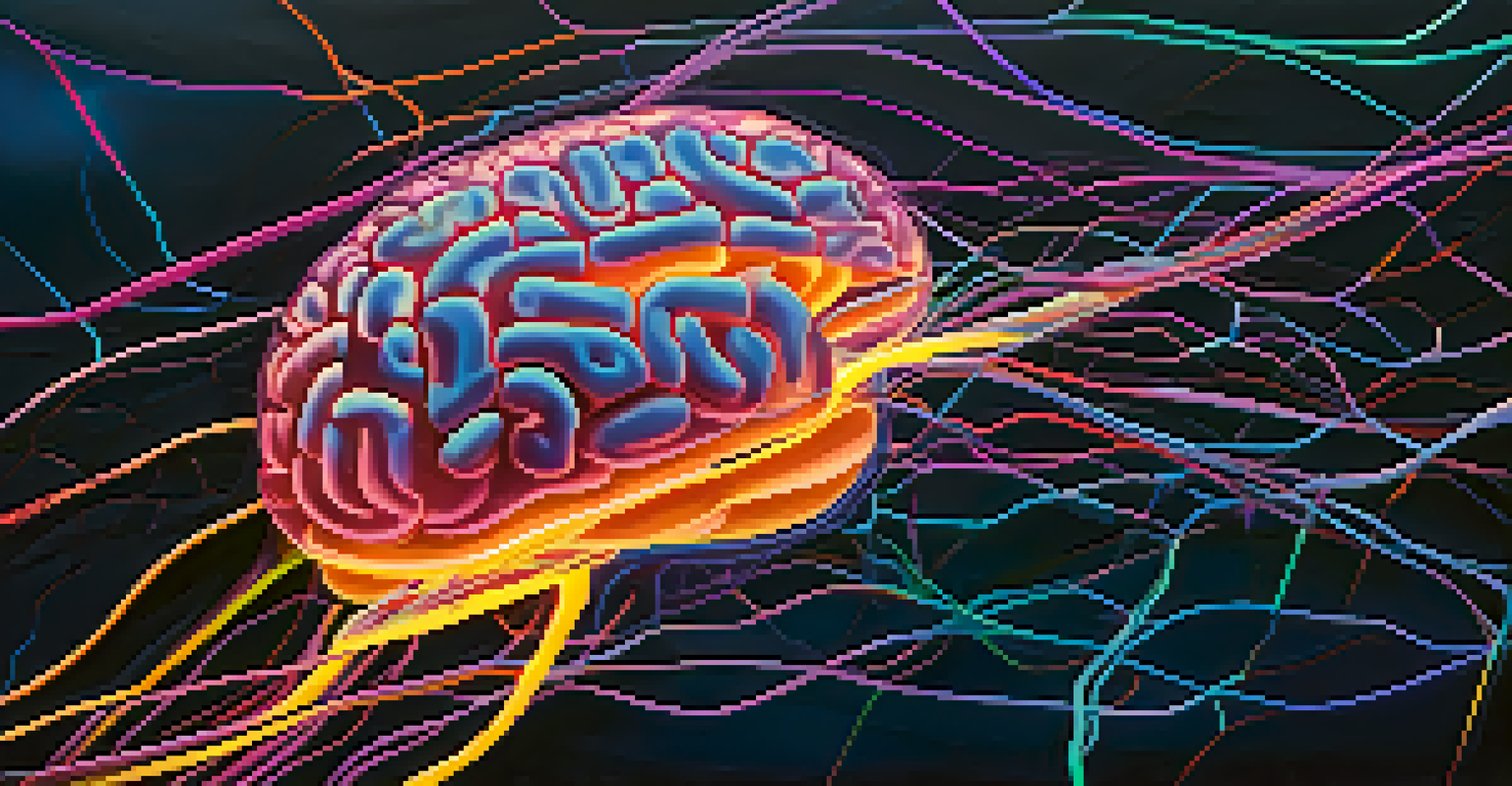The Therapeutic Potential of Entheogens in Self-Discovery

Understanding Entheogens and Their Historical Context
Entheogens are psychoactive substances that have been used for centuries in various cultures, often during spiritual rituals. These natural compounds, such as psilocybin, ayahuasca, and peyote, are believed to connect individuals with deeper aspects of their consciousness. Historically, they have played a crucial role in healing practices, offering insights that transcend ordinary perception.
Psychedelics can help us confront the parts of ourselves that we have avoided for too long.
Many indigenous cultures have utilized entheogens to facilitate communication with the spiritual realm and foster self-awareness. For instance, the Mazatec people of Mexico traditionally use psilocybin mushrooms in healing ceremonies. This historical context underscores the potential for these substances to aid in personal transformation and self-discovery.
In modern society, the increasing interest in mental health has led to a resurgence in the exploration of these substances. As researchers delve into their therapeutic effects, we are beginning to understand how entheogens can provide profound insights into our psyche and promote healing.
The Science Behind Entheogens and Self-Discovery
Research indicates that entheogens can alter brain function, particularly in areas related to self-referential thought and emotional regulation. For example, studies on psilocybin have shown increased connectivity between different brain regions, leading to a sense of unity and interconnectedness. This shift in brain dynamics can help individuals confront deep-seated fears and traumas, paving the way for personal growth.

Neuroimaging studies reveal that during entheogenic experiences, the brain often experiences a state of heightened emotional awareness. This heightened awareness can facilitate introspection, allowing individuals to explore their thoughts, feelings, and beliefs in a safe space. Such insights can be transformative, leading to breakthroughs in self-perception and understanding.
Entheogens Aid Self-Discovery
These psychoactive substances facilitate profound insights and personal transformation, often through guided experiences.
Moreover, these substances encourage a sense of openness, which can lead to new perspectives on life challenges. By fostering an environment of acceptance and curiosity, entheogens can help individuals navigate complex emotional landscapes, making self-discovery a more approachable journey.
Personal Experiences: Stories of Transformation
Many individuals who have engaged with entheogens describe their experiences as life-changing. For instance, a person might enter a session feeling overwhelmed by anxiety and leave with a renewed sense of purpose and clarity. These personal stories highlight how entheogens can facilitate profound shifts in perspective, transforming pain into understanding.
The healing of the soul requires the courage to face the shadows within.
One common theme in these narratives is the ability to revisit past traumas and gain closure. A participant might relive a painful memory but find that, through the lens of an entheogenic experience, they can process those emotions differently. This journey often leads to forgiveness, whether of oneself or others, which is a crucial aspect of self-discovery.
Additionally, individuals frequently report enhanced creativity and problem-solving abilities following their experiences. By breaking down mental barriers, entheogens can unlock new ways of thinking, allowing individuals to tackle life’s challenges with fresh insight and confidence.
The Role of Set and Setting in Entheogenic Experiences
Set and setting are critical components in the efficacy of entheogenic experiences. 'Set' refers to the mindset of the individual, while 'setting' encompasses the physical and social environment where the experience takes place. A positive mindset paired with a safe and supportive setting can significantly enhance the therapeutic potential of entheogens.
For example, many practitioners advocate for guided sessions where participants are supported by experienced facilitators. This supportive environment can help individuals navigate challenging emotions and integrate insights gained during their journey. When participants feel secure, they are more likely to explore their inner landscapes without fear.
Set and Setting Matter
The effectiveness of entheogenic journeys is significantly influenced by an individual's mindset and the environment in which the experience occurs.
Conversely, an unsafe or chaotic setting can lead to challenging experiences, which may deter individuals from seeking out entheogens for self-discovery in the future. Thus, creating an intentional atmosphere is key to harnessing the healing properties of these substances.
Integrating Insights Post-Experience for Lasting Change
The journey doesn’t end when the entheogenic experience concludes; integrating insights gained during the session is crucial for lasting change. Many individuals find it beneficial to journal about their experiences, reflecting on the emotions and realizations that surfaced. This practice can help solidify newfound understandings and promote continued self-exploration.
Additionally, engaging in practices such as meditation or therapy can further enhance the integration process. These methods enable individuals to explore their insights in a supportive environment, fostering deeper self-awareness and personal growth. By actively working on integration, the benefits of the experience can extend far beyond the initial journey.
Ultimately, integration is about making sense of the experience and applying insights to daily life. This process can lead to lasting transformations, as individuals begin to embody the lessons learned and shift their behaviors toward more fulfilling paths.
Potential Risks and Considerations with Entheogen Use
While entheogens can offer profound insights, it's essential to approach them with caution. Certain individuals may experience adverse reactions, especially those with a history of mental health disorders. It's crucial to assess personal readiness and consult with professionals when considering entheogen use for self-discovery.
Moreover, the legality of entheogens varies by region, which can pose additional challenges. Understanding the legal framework surrounding these substances is vital for safe exploration. Being informed can help individuals make responsible choices and avoid potential legal repercussions.
Integration is Key
Post-experience integration of insights is crucial for lasting change and personal growth after engaging with entheogens.
Lastly, the potential for misuse exists; entheogens should not be seen as a 'quick fix' for deeper issues. They can be powerful tools for self-discovery, but they require respect, intention, and a commitment to the integration process to truly unlock their therapeutic potential.
The Future of Entheogens in Therapeutic Practices
As research on entheogens continues to grow, there is increasing interest in their potential therapeutic applications. Clinical studies are exploring how these substances can assist in treating conditions like depression, PTSD, and anxiety disorders. This shift could lead to a broader acceptance of entheogens as legitimate tools for healing and personal development.
The potential for entheogens to be integrated into therapeutic practices offers exciting possibilities. Trained professionals may soon be able to guide clients through structured sessions, allowing for deeper exploration of self and facilitating healing in a controlled environment. This approach could revolutionize mental health care by providing alternative pathways to wellness.

Ultimately, the future of entheogens in therapy hinges on continued research and open dialogue about their benefits and risks. As societal attitudes shift, we may see a greater acceptance of these substances as valuable resources for self-discovery and healing.